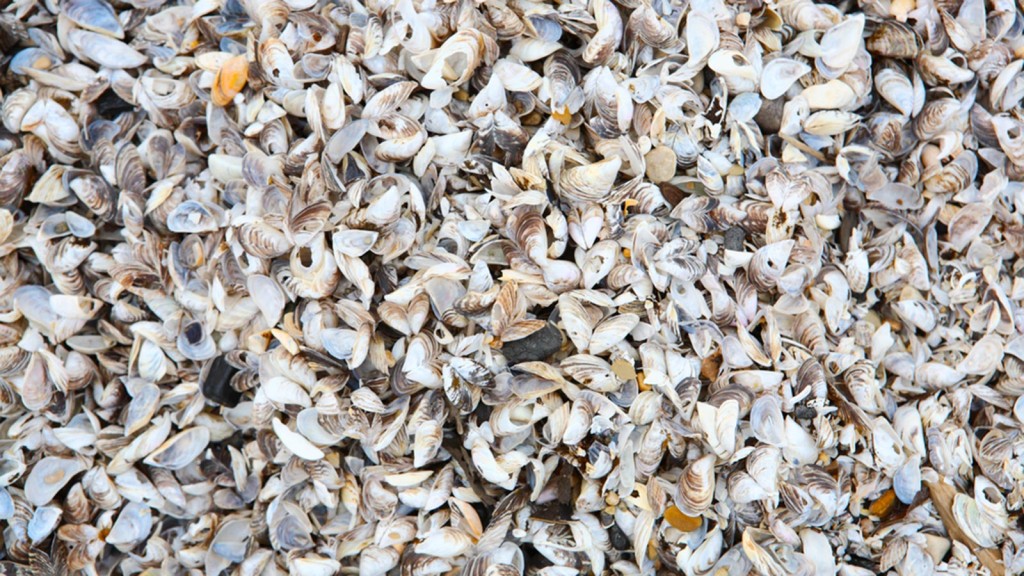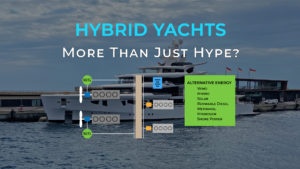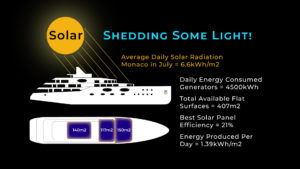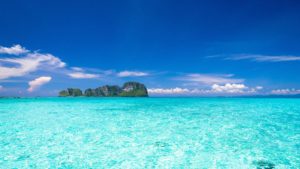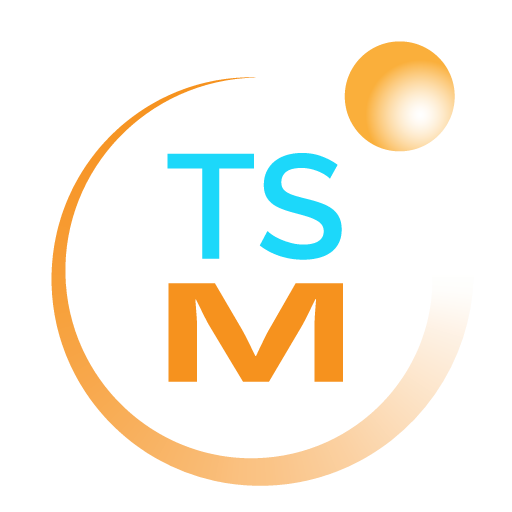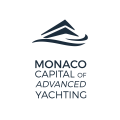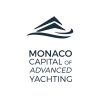As we are getting ever closer to the Ballast Water Convention entering into force, requiring only 0.13% of World tonnage to tip the scales, I thought it timely to update and re-post this article that highlights some of the challenges for superyachts.
Introduction
To prevent the translocation of invasive aquatic species (IAS) via ships water ballast and the effects this can have on biodiversity and ecosystems, the International Maritime Organisation (IMO) Adopted the International Convention for the Control and Management of Ship’s Ballast Water and Sediment, 2004 (BWM 2004).
Under this Convention ships must have an approved ballast Water Management Plan (BWP) for preventing ballast and sediment taken from one coastal region, being discharged untreated in another coastal region. Methods to prevent this include ballast water exchange (D-1 Standard) and ballast water treatment (D-2 Standard).
The Convention will apply to all vessels, including yachts private and commercial – there is a provision for equivalence compliance for pleasure craft used solely for recreation or competition provided less than 50m LOA and less than 8 cubic metres of water. Whilst the Convention will not be applicable to the majority of yachts it will certainly affect the larger tonnage that travel internationally and use either seawater or fresh water to maintain trim, list, stability and structural integrity.
Background
It is estimated that today shipping carries about 90% of World Trade and moves around 10 billion tonnes of ballast water each year (GloBallast, 2010).
Ballast water has been used as a means of maintaining stability, structural integrity and vessel performance since the advent of metal ships. The effects of this ballast water movement were noticed as early as the 1900’s when scientists noted that IAS had been introduced from one coastal region to another, including Asian diatoms and crabs appearing in Western Europe that could only be attributed to transportation by ships (Carlton, 2010).
Since then there have been a number of ballast water related incidents which have had significant economic, environmental and health consequences, two examples that highlight the catastrophic impact from the GloBallast ‘Ten of the Most Wanted’ poster include:
- Cholera – One cholera epidemic attributed to ballast water began simultaneously in three separate ports in Peru in 1991 affected more than a million people and killed around 10 thousand people by 1994. This strain of cholera was also identified in the ballast water of ships in US Ports in 1991 and 1992 (McCarthy, Khambaty, 1994)
- Zebra Mussel – Native to The Black Sea and introduced to western and Northern Europe, Ireland, Baltic sea and half of North America. This species displaces native species, alters food web and causes severe fouling on various structures. The economic cost to the US between 1989 and 2000 is estimated to have cost upwards of $1 billion (GloBallast).
Status
BWM 2004 will enter into force (EIF) 12 months after not less than 30 states, the combined merchant fleet representing not less than 35% of World Tonnage have signed it without reservation or ratified the convention. According to IMO Summary of Status, dated 2nd August 2016, there are currently 51 states totalling 34.87% of World Tonnage that have so far ratified the Convention.
The Convention makes provision for Port State Control (PSC) inspections to verify compliance and allows Administrations and/or Flag States to impose fines or other such penalties on vessels and owners who do not comply or wilfully ignore the requirements.
Although BWM 2004 is not yet in force a number of countries e.g. Australia, USA, Canada, Norway already have legislation in place based on the Convention in order to protect their marine environment. This means that any vessel that does not comply with BWM 2004 or National rules could face civil and/or criminal proceedings and could be blacklisted from sailing in those regions.
An example of the penalties that are currently in place for US Coastal Waters Code of Federal Regulations (CFR) Title 33: Navigation and Navigable Waters 151.2080:-
(a) A person who violates this subpart is liable for a civil penalty in an amount not to exceed $35,000.00 each day of a continuing violation constitutes a separate violation. A vessel operated in violation of the regulations is liable in rem for any civil penalty assessed under this subpart for that violation.
(b) A person who knowingly violates the regulations of this subpart is guilty of a class C felony.
The situation in the US is also confused by two authorities tasked with the control of ballast water, the Coast Guard with their Ballast Water Management regulations and the Environmental Protection Agency (EPA) with their Vessel General Permit 2013 (VGP) that covers incidental discharges from vessels, including ballast water. Any yacht intending to operate in the US waters must carefully consider the implications of these standards, future changes implied by a recent court ruling – http://www.blankrome.com/index.cfm?contentID=37&itemID=3716 – and the IMO BWM 2004.
Australia also has in place heavy penalties for the Master and Ship-owner for any infringement of their National Ballast Water policy.
Implementation
Due to the various challenges encountered with this complex issue the implementation has been delayed. It is over 10 years since the Convention was first Adopted and significant strides have been made in all areas related to the problem, in particular the technology and approval of treatment systems.
Based on the IMO Resolution A.1088(28) that detailed an updated implementation plan, and given that Entry Into Force (EIF) will not happen until after December 2016, the applicable date for compliance with the D-2 Standard for all ships will be the first renewal survey of the Oil Pollution Prevention Certificate (IOPP) following the date of EIF.
Upon EIF ships may use either the D-1 or D-2 Standard, until D-2 compliance is mandatory.
Standards
The two Standards for handling ballast water are, in brief:-
D-1 Ballast Water Exchange Standard – this involves at least 95% volumetric exchange, which can also be achieved by pumping through at least three times the volume of each ballast tank.
Regulation B-4 also details the criteria for conducting ballast water exchange. Wherever possible this should be 200nm or at least 50nm from nearest land and in at least 200m depth of water.
D-2 Ballast Water Performance Standard – this method uses an approved system to treat the ballast water. This entails filtering and sanitising the water for organisms and microbes.
Ballast Water Management Plan
Every yacht to which the Convention applies must have on board and implement a Ballast Water Management Plan (BWP) that has been approved by its Administration. It is yacht specific and must contain details of the actions and procedures necessary to comply with the requirements of the Convention including:
- safety for the ship and the crew;
- disposal of sediments at sea and ashore;
- co-ordinating and communicating with State/Port authorities;
- designate an officer on board in charge of the ships BWM and;
- detail the reporting requirements.
The Plan must also be written in the working language of the yacht.
Ballast Water Record Book
Compliant yachts will be required to maintain a Ballast Water Record Book that can be an electronic system, or integrated into another record book or system. The contents of the book should as a minimum comply with the requirements detailed in Appendix II of BWM 2004.
The record book shall be used for recording all ballast events on board the vessel and maintained on board the vessel for a minimum of two years after the last entry, and thereafter retained for a further 3 years.
International Ballast Water Management Certificate (IBWMC)
Compliant yachts of 400gt or over will need to be surveyed and issued with a valid IBWMC that verifies that the Ballast Water Management plan and any associated structure, equipment, systems, fitting, arrangements, material and processes comply fully with the requirements of the Convention. The certificate can be issued by Flag or other nominated organisations such as Classification Societies e.g. Lloyds.
For yachts under 400gt Administrations will establish appropriate measures to ensure they comply with the applicable provisions of the Convention.
The certificate is valid up to a maximum of 5 years and subject to annual, intermediate and renewal surveys to ensure that the Ballast Water Management Plan still complies with the Convention.
Yacht and Safety Considerations
Along with the standards for the ballast water the safety of the yacht and crew has to be considered in any Ballast Water Management Plan and some of these are listed below:
Structural damage or failure due to:
- Shear force and bending moments as tanks are emptied and filled
- Sloshing from partially filled tanks with sequential method
- Over pressure of tanks from pumping through method
Transverse stability and trim:
- Changing location of ballast and free surface effect of slack tanks or overflow water contained due to inadequate drainage, will have an effect on stability and the ship must maintain a positive GM and be in compliance with minimum IMO Stability criteria throughout the operation
- The vessels trim relative to loading state and weather/sea conditions should be correctly maintained for directional stability and performance/economy
Safety of the crew:
- Wet decks due to tank overflow
- Permit to Work and enclosed space procedures for any tank entry operations such as sediment removal
- Weather/sea conditions when working on deck
- Appropriate training, risk assessments and Personal Protective Equipment (PPE) if required
It should be noted that the Convention does allow for non-compliance with the requirements in certain circumstances including safety of the vessel and/or crew, and in the prevention or minimising of a pollution incident.
Fresh/Potable Water
One possible method used by yachts for ballast is fresh water from shore, or water made onboard using reverse osmosis (RO) systems. Whilst this was not specifically mentioned in BWM 2004, ballast water is defined in Article 1, 2 “water with its suspended matter taken on board a ship to control trim, list, draught, stability or stresses of the ship”. It was therefore agreed in MEPC 59 that fresh/potable water would be treated as ballast water within the meaning of the Convention and should meet the D-2 standard, but their may well be a further review of this.
It does seem a little strange given that there is nothing to stop a yacht from washing down with the same water from its fresh or technical water tanks!
Under the current interpretation yachts using fresh water will have comply with D-2 upon EIF as it would be impractical to comply with D-1 using ballast water exchange – what would you exchange it with?
Whether additional equipment will be required to comply with D-2 will depend on how willing the RO manufacturers are to obtaining Type Approval for their RO systems. This seems unlikely given the additional costs involved with this process and the limited number of installations using this method.
There is an excellent document from GloBallast “Establishing equivalency in the performance testing and compliance monitoring of emerging alternative Ballast Water Management Systems” that provides further information on this issue.
Conclusion
There may be a degree of reticence to embrace this convention, for a whole raft of reasons, not least of which the availability of approved equipment however, when it comes into force it will have an impact on superyachts that use ballast water in any way.
Although there is at least 12 months until EIF – depending on tonnage ratification – yachts should be evaluating how they will comply with the convention; they can choose between D-1 or D-2 until such time D-2 is mandatory based on EIF and their IOPP renewal survey. In parallel, they should also be developing and preparing their Ballast Water Management Plan, which will need to be approved by an Administration.
Further, if fresh water is currently being used, or being considered in a new-build, perhaps it should be re-evaluated given the requirement to comply with D-2, lack of approved RO systems, and the cost and inefficiencies of using RO water for ballast. And, also noting that yachts using fresh water will probably require a D-2 treatment system installed upon EIF.
Note: Under the Biosecurity Act 2015 that entered into force on June 2016, Australia have taken a different approach to the use of fresh/RO water for ballast, which they consider to be ‘Low Risk’. Further information can be found here
Finally, for World cruising yachts, it is important to be aware of and understand the various National regulations imposed on ballast water control that are already in place around the World.

